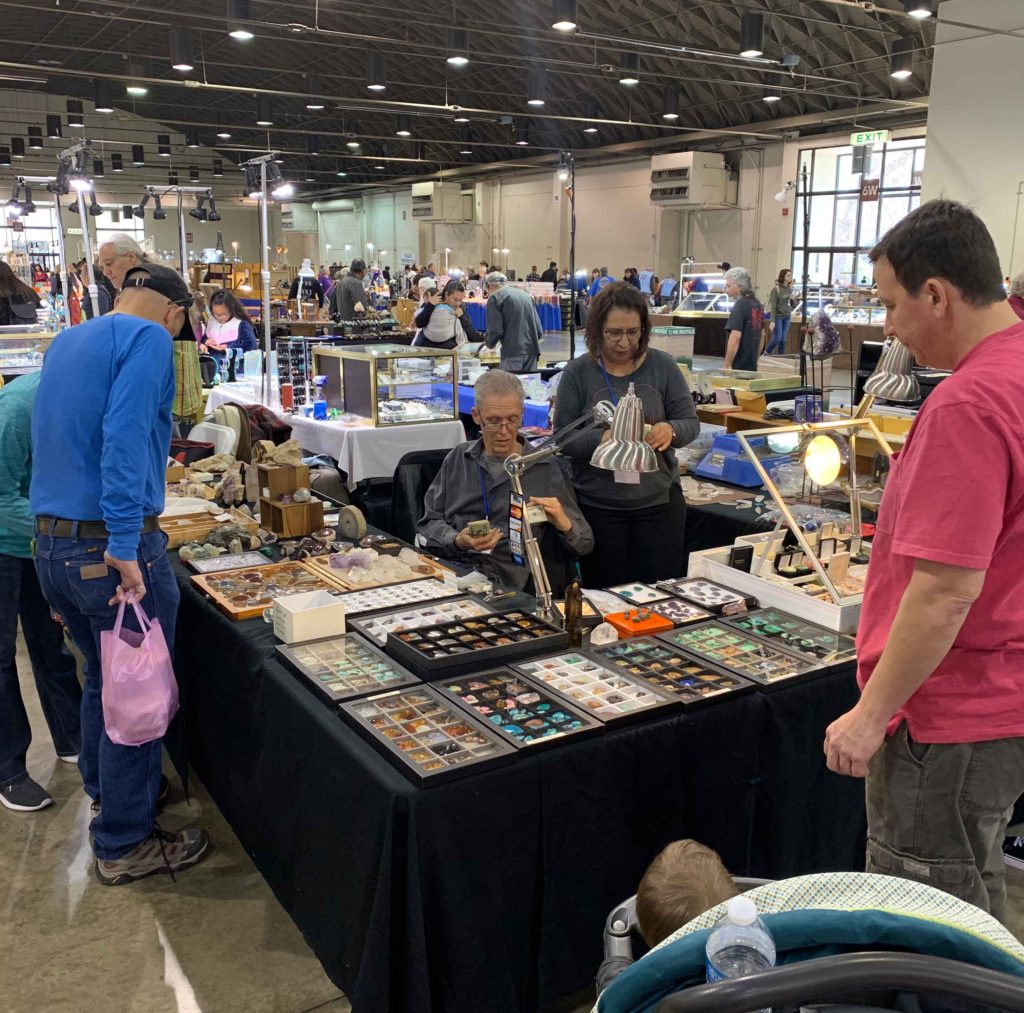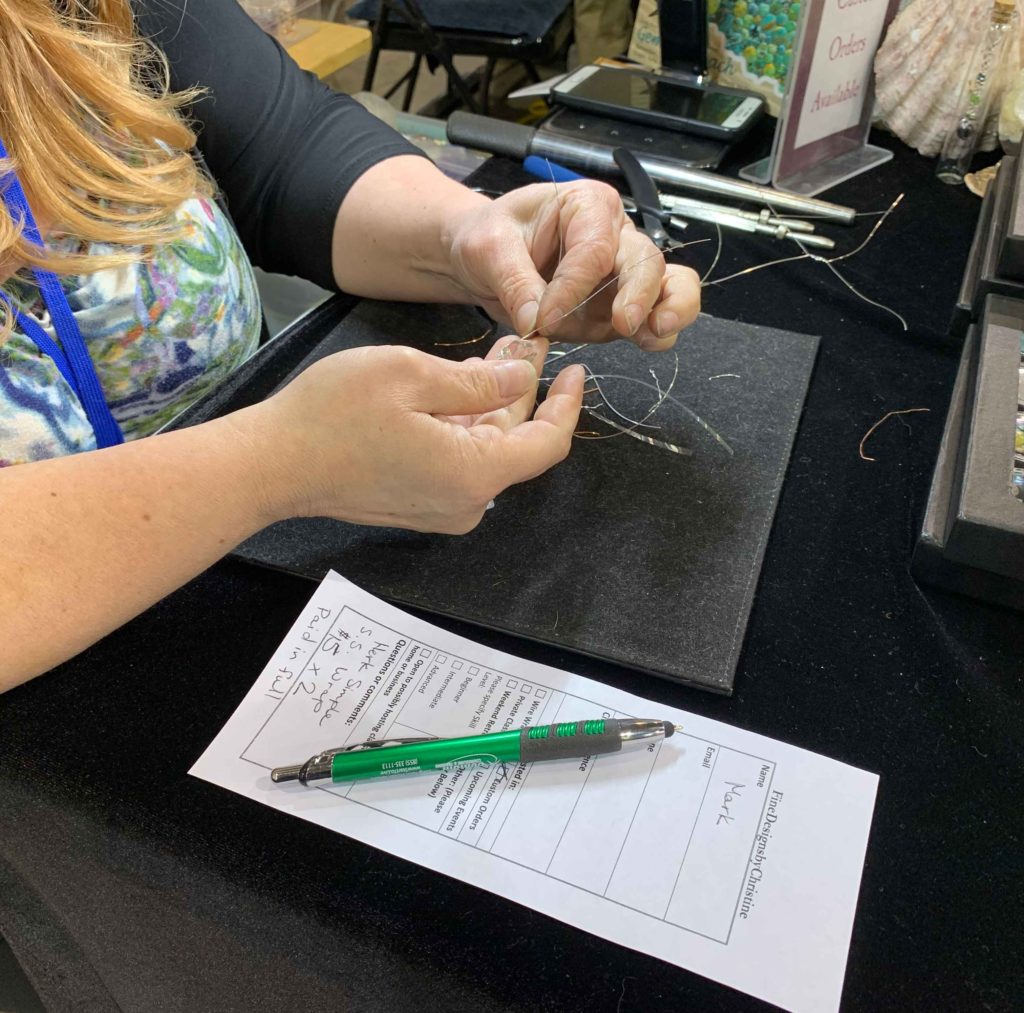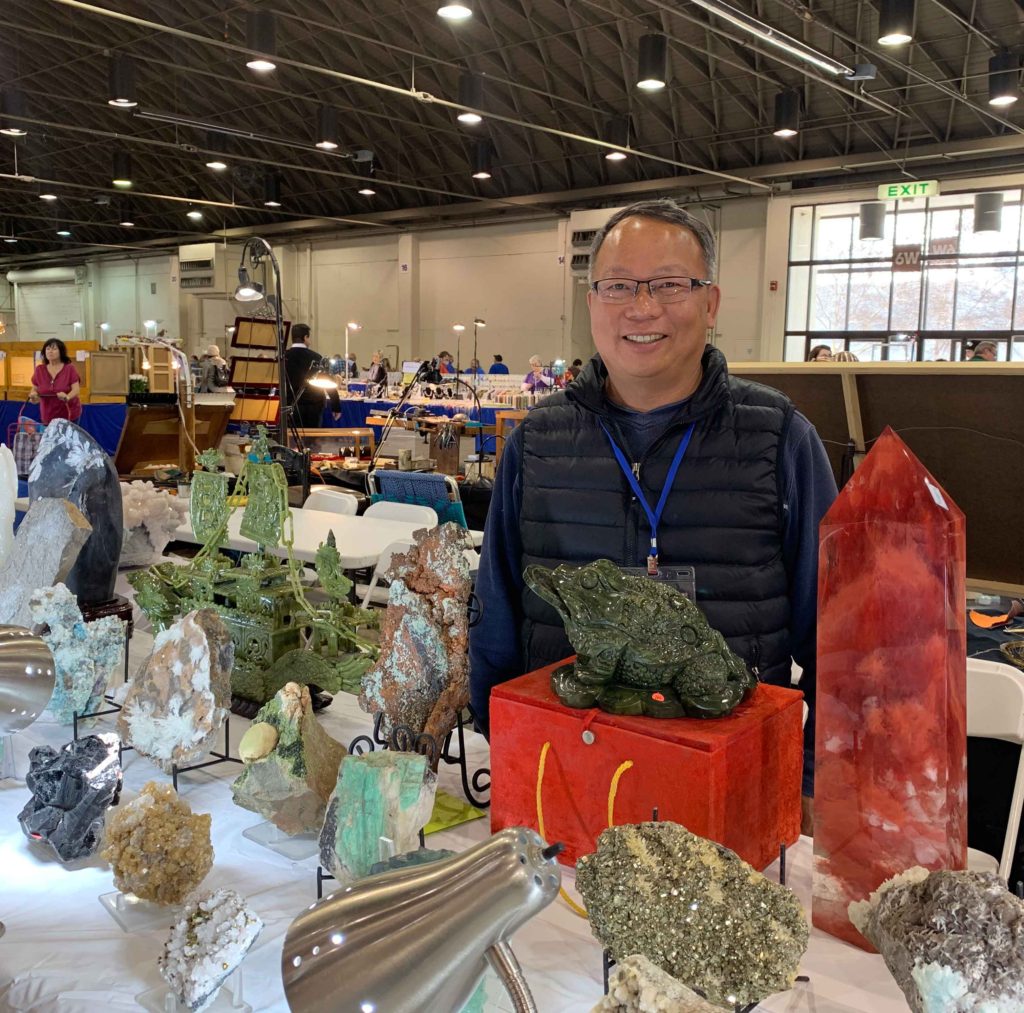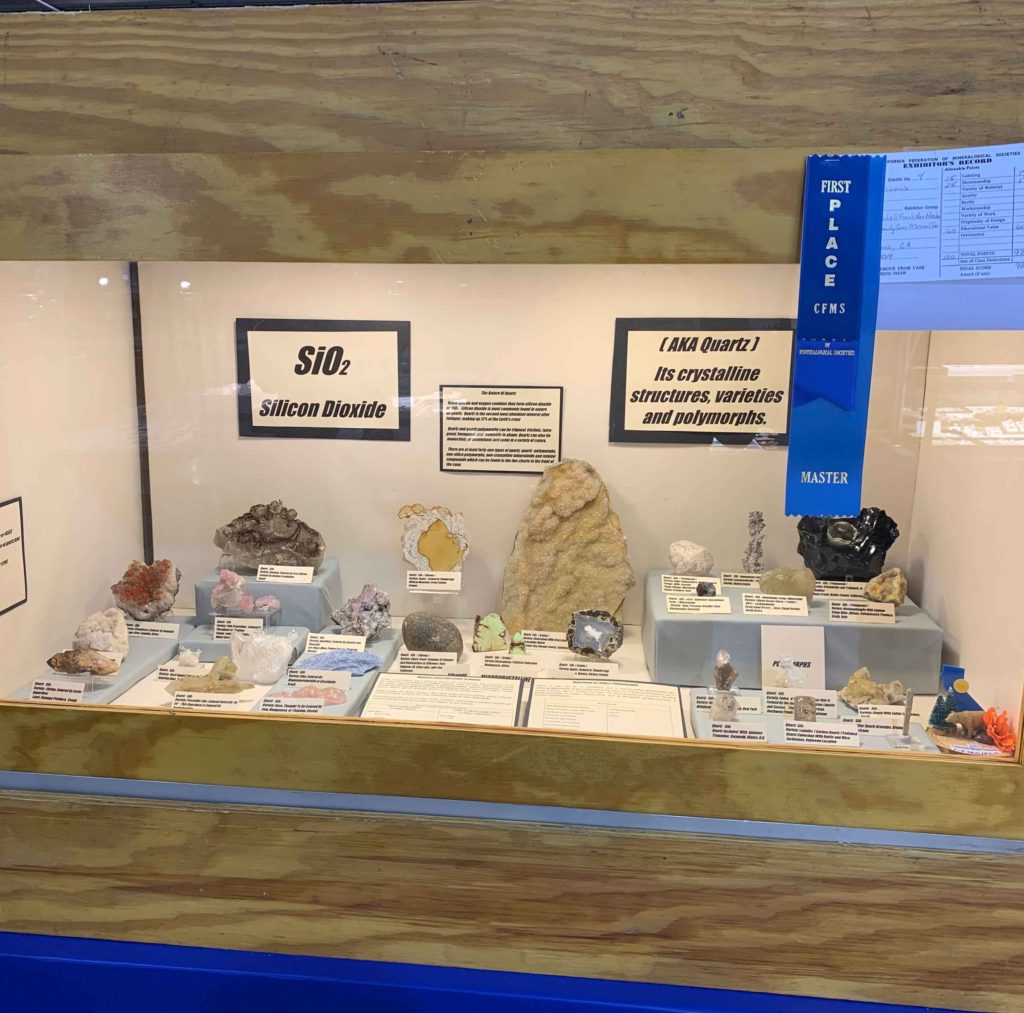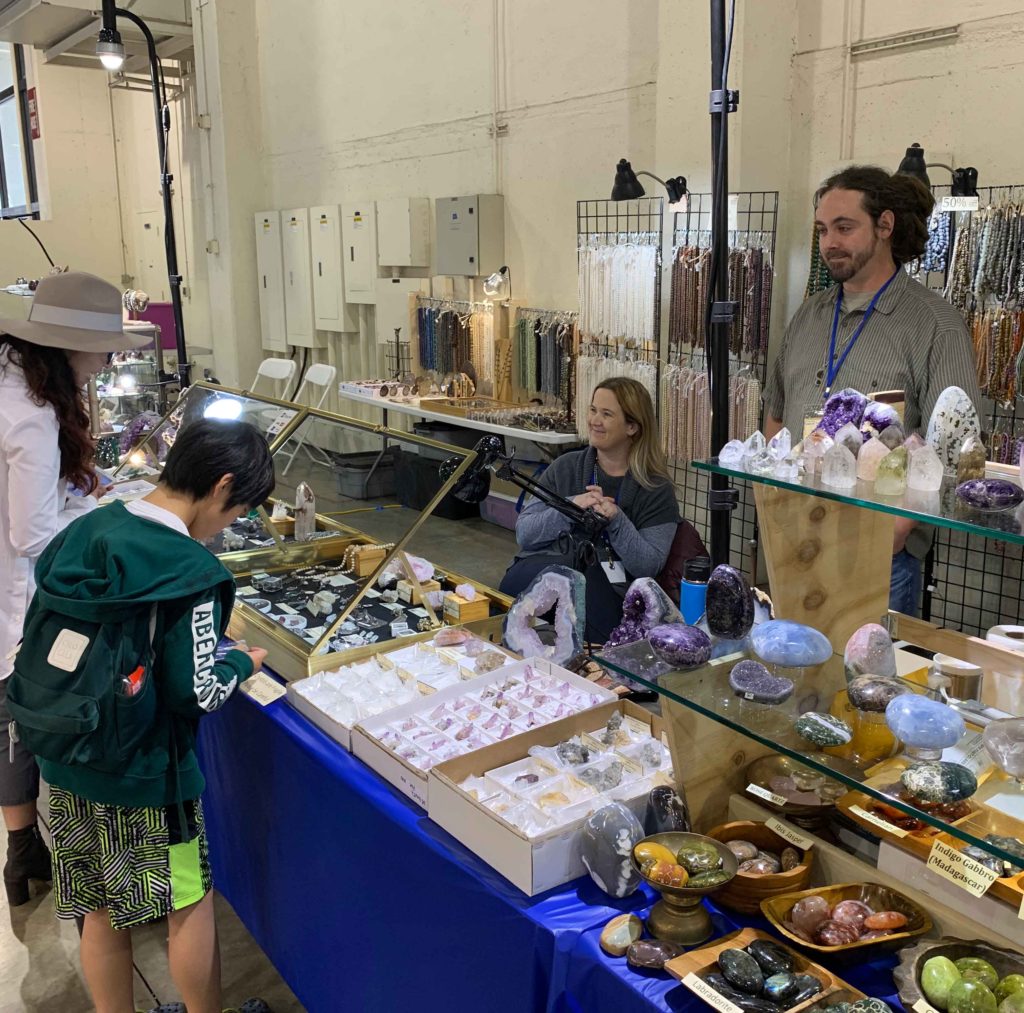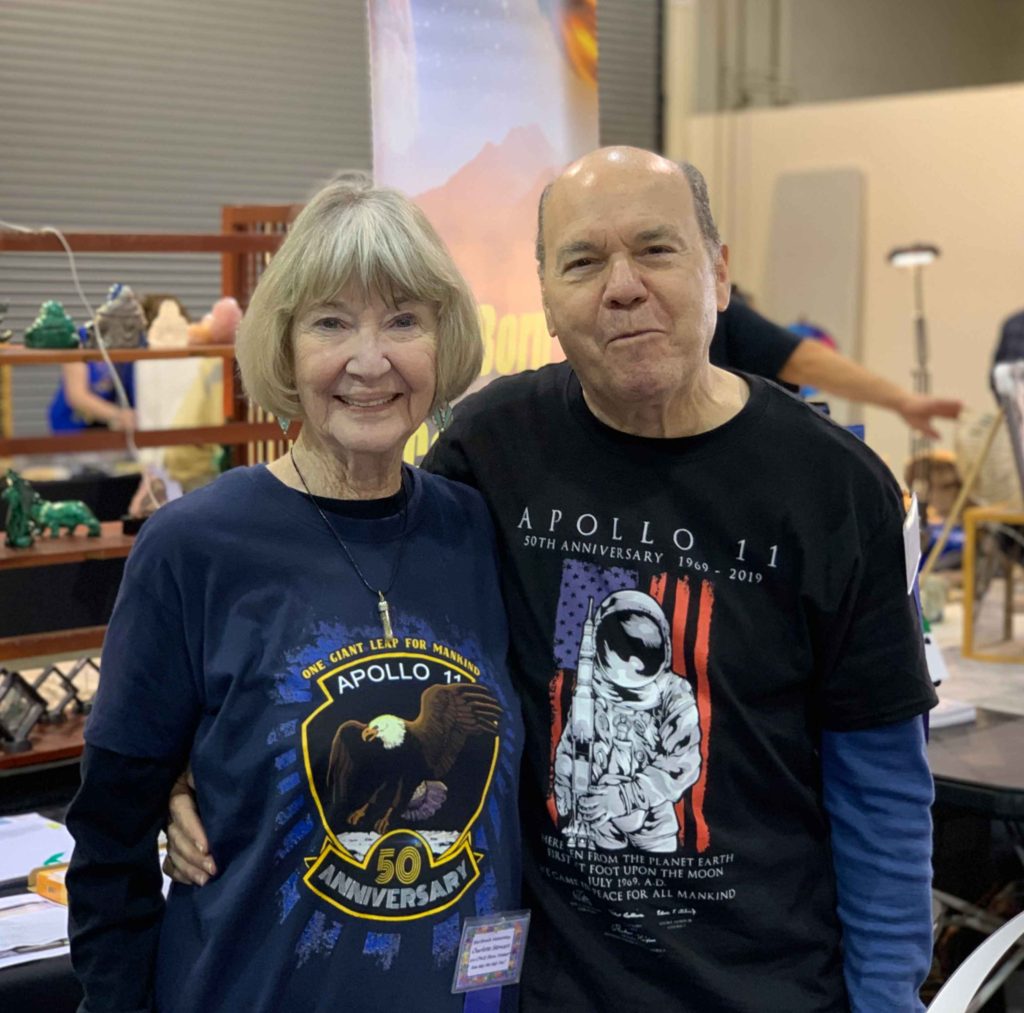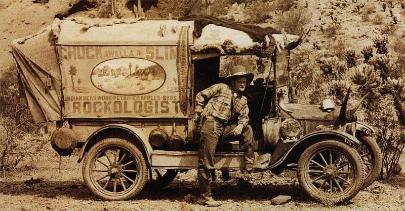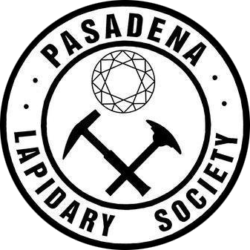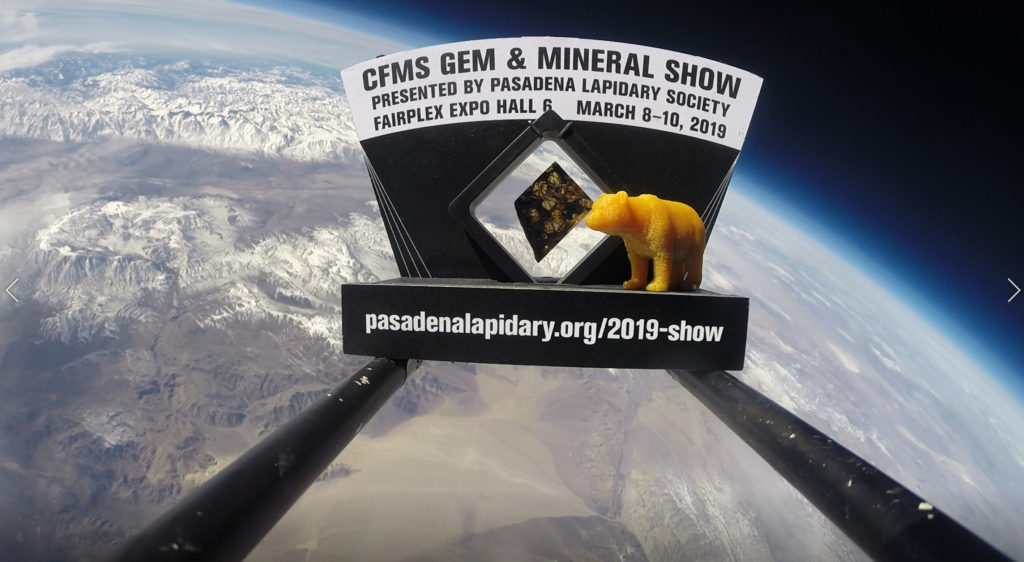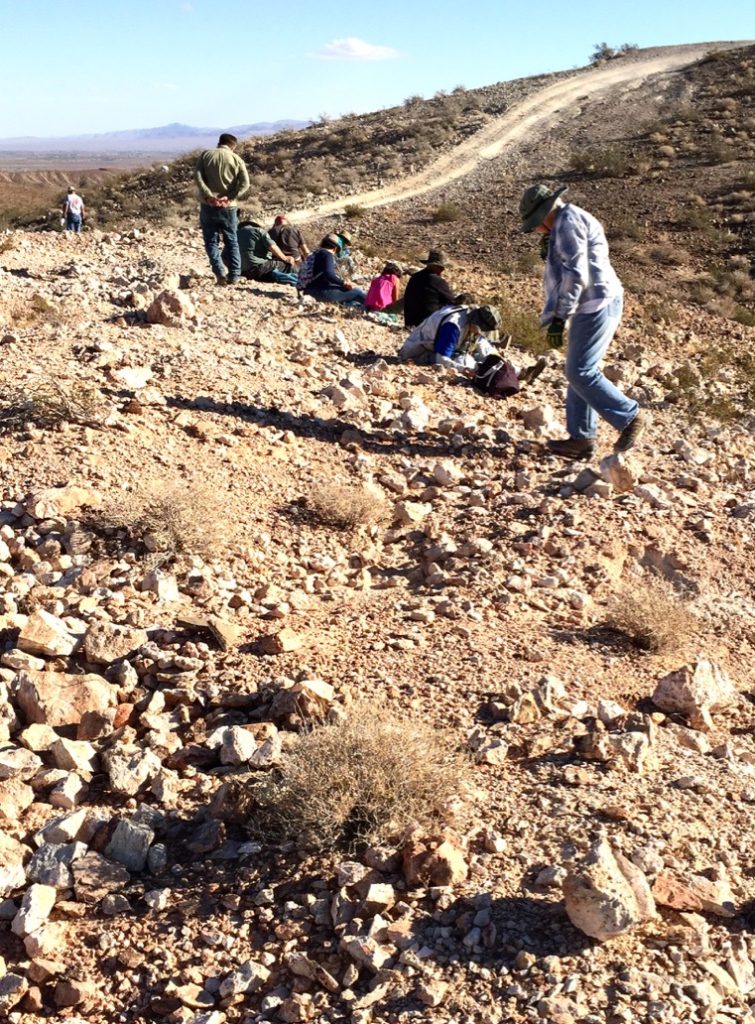By Joe Goetz
Friday morning turned out to be a perfect morning: The temps were not too hot or cold. The sun was shining as Marcia and I were trying to get ready to leave. We caravanned out with Sylvia Cliffe, Carolyn Duncan, and Charlotte Bane. The traffic was flowing better than I had thought, and a couple of hours later we were at the hotel. We got there safe and hung out for the rest of the day. All too soon I was dreaming about the rocks we would collect on Saturday, which came all too fast, and the sun was just barely up and breakfast was in the schedule.
We were getting things ready as people (30 in all) began showing up, and we talked about the upcoming day’s events and got release forms signed. Before you knew it, it was 8:30 a.m. and I gave a little safety talk. I reassured everyone that if you got bit by a snake, we’d get you to help. Of course, along the way we might just have to stop to collect some rock here and there. But we’ll get you there (just kidding).
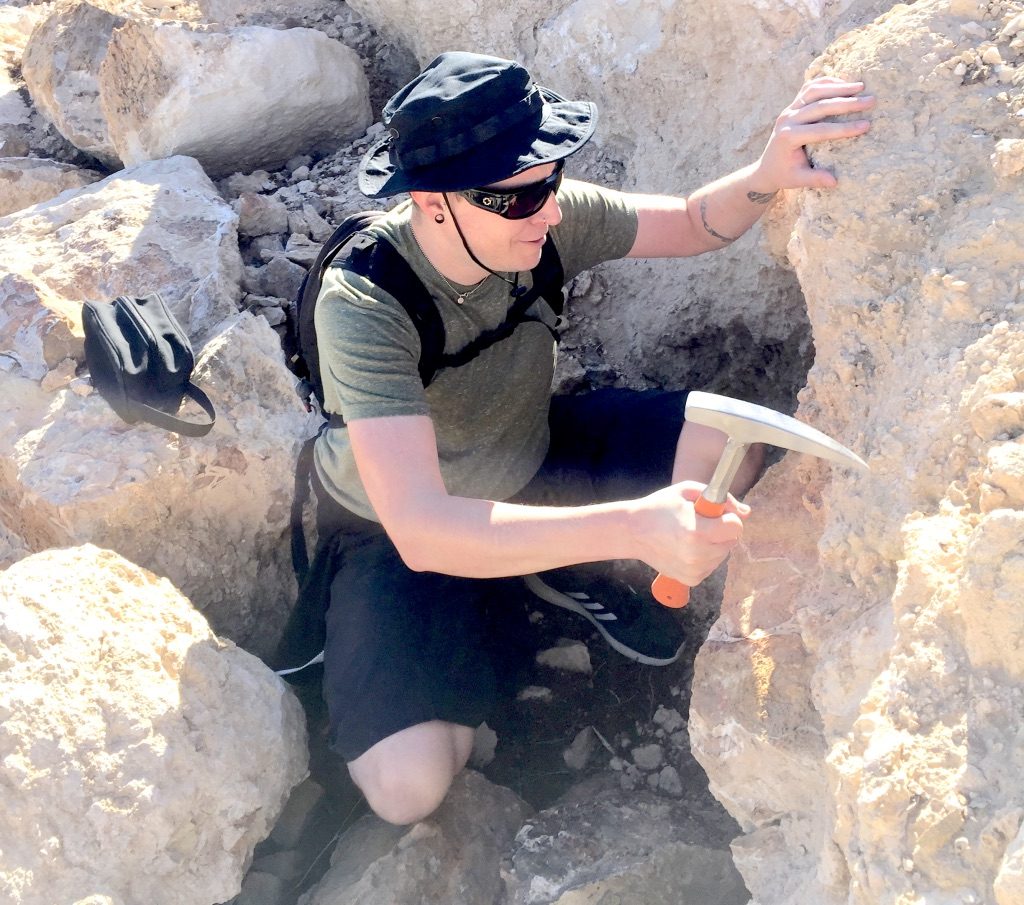
The first place we went was the Whittier Club camping area. We stopped at a rock pile where some members have brought out their overflow and deposited it there for anyone to collect. Chances are you could find a piece of something there that you might not be able to collect anymore. Then it was off to the claim itself, and after about 30 minutes or so we headed over to the red moss agate area. I think everyone got some agate of different types as well as some of the red moss agate.
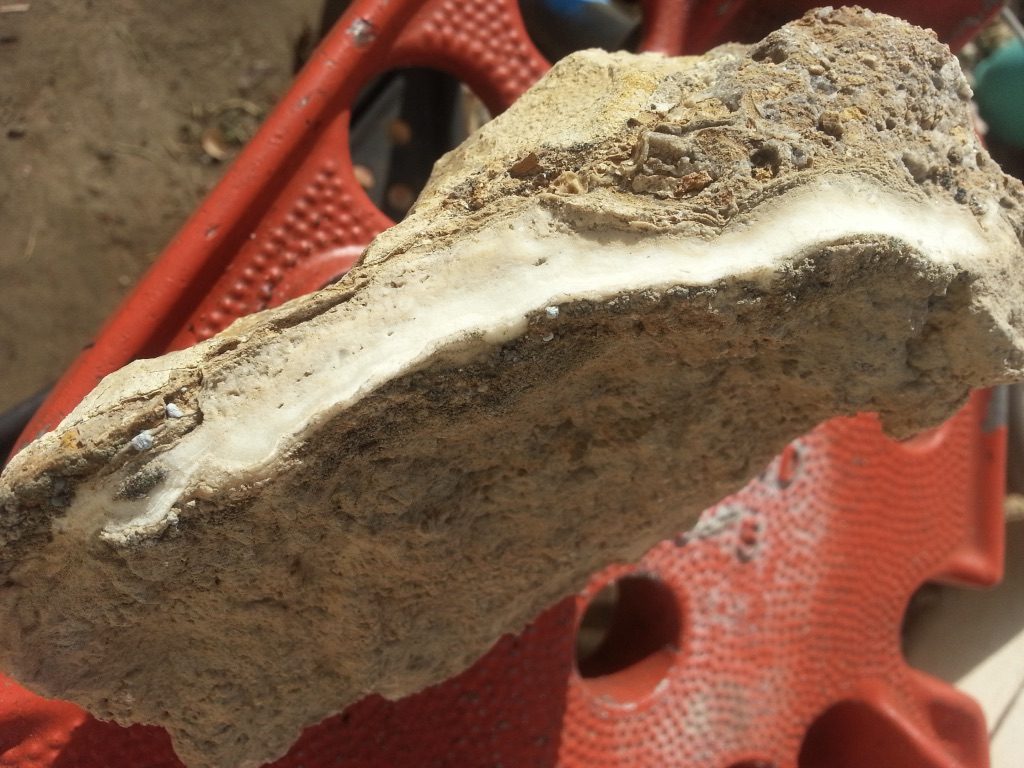
We headed back to the hotel for lunch. From there, we headed over to what we call Jason’s place. It is an area below some of the transmission towers. The reason we call it Jason’s place is that longtime Junior member Jason Badgley had told us he had been there, and when we got there every stone had been chipped. Stones were collected, and after 30 or so minutes we were off. Jay Valle led the group, and Marcia and I were bringing up the rear as we headed to “the wide spot in the road.”
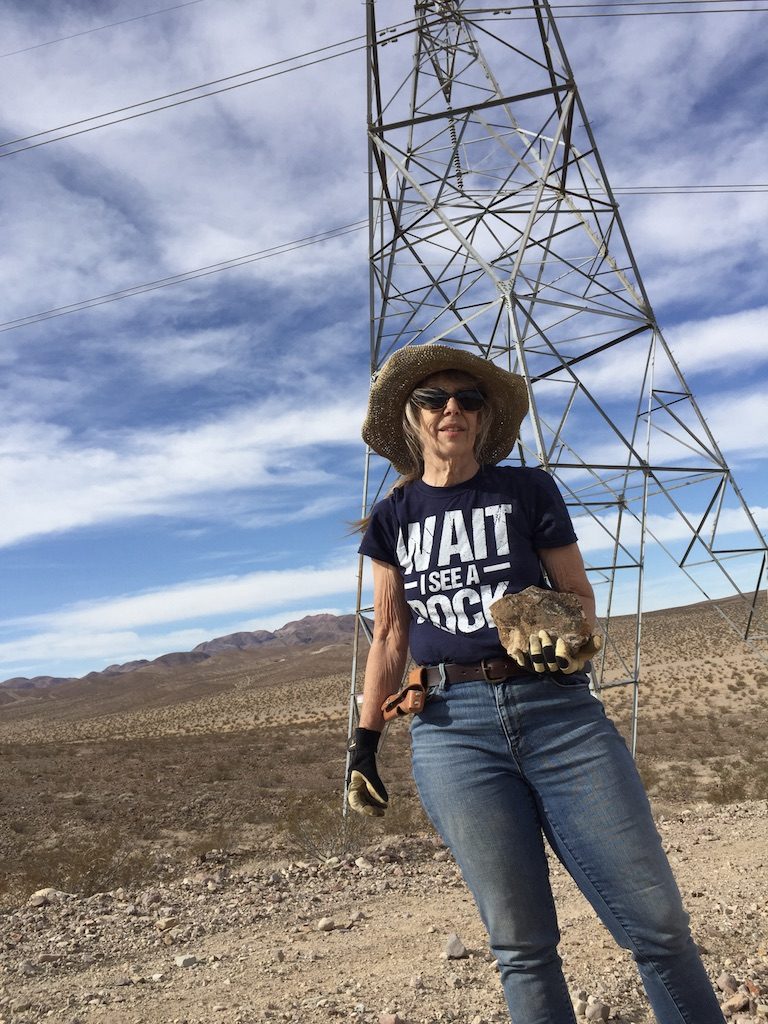
Marcia and I decided to take the road a little further, passing Steve Cady who hiked up the hill. Marcia started to dig out what she thought was a double-fisted size piece of agate. However, it just kept getting larger and larger. I took over the digging, and it still got bigger. It started to wiggle in the hole a bit, so we asked Steve Cady for some help. He grabbed the stone with both hands and yanked it out and carried it to the truck bed (oh to be young again!). After we showed off Marcia’s little pebble, we all decided it was time to go back to the hotel and ready ourselves for dinner at Peggy Sue’s. Dinner was excellent as it always has been.
Sunday morning arrived, and we were getting ready to head out to some other locations. We had three guests from the San Diego area that day. We headed out and went to the silver lace onyx area. I do believe everyone who wanted it got some of the material. Marcia and I picked up little pieces for putting in grab bags for the CFMS Show in March 2019.
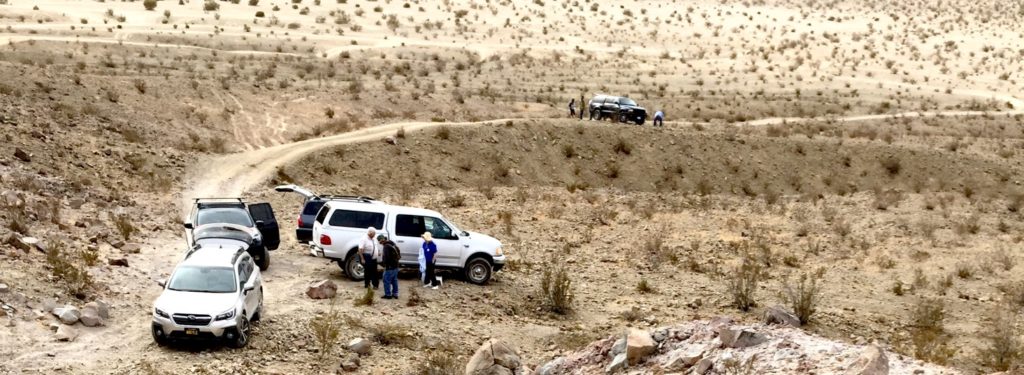
Next, we headed out to Mule Canyon to the algae agate area. We all found out just how much the canyon had been rearranged by rain. We did find the right road and got to the spot. I found lots of black agate; Jay found a nice algae agate. Someone asked if the green was indeed algae. The answer was the area at one time was much wetter, and there were ponds all over the place. In the ponds, there was in fact algae and pond scum growing. The area was suddenly covered with volcanic ash, and over time the algae and scum were petrified. The algae agate shows as a very distinct algae pattern in the stone. As for the pond scum, well, that was compressed and then petrified. If you think about that black agate I found…
